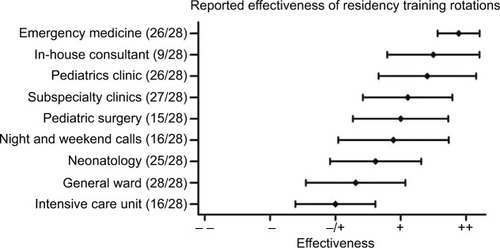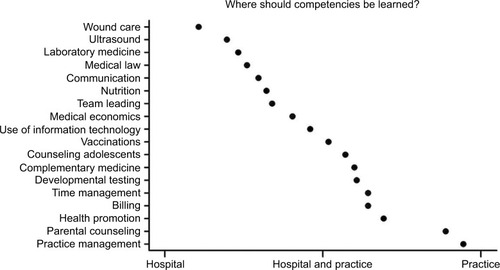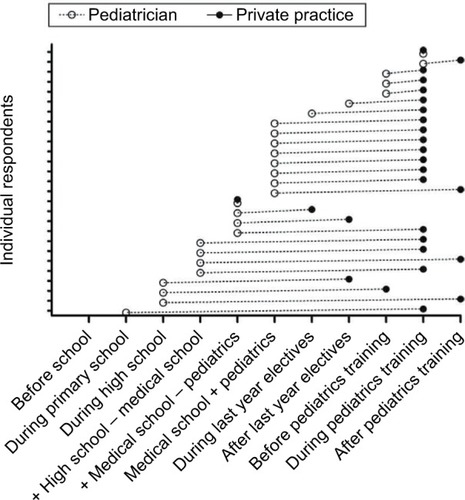Figures & data
Figure 1 The reported educational effectiveness of residency training rotations (depicted as ranking based on respondent ratings) shows that most respondents rated emergency medicine as highly effective for private practice, whereas intensive care unit training was rated with a medium learning effect for private practice.

Figure 2 Alumni reported that they would have preferred to learn competencies required for private practice pediatrics in different settings, depending on the subject.

Table 1 Summary of respondent data and demographics (S1, www.doctorfmh.ch, individual practice websites, and hospital human resources database)

